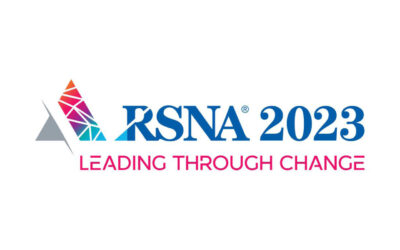
Written by Jim Carr, Director of Services and International operations for AUE
Almost every aspect of servicing and maintaining diagnostic imaging systems has changed during my 40-year career. The large scale integration of digital electronics technology has resulted in systems that can produce detailed images in milliseconds, and which need to be repaired at the module or assembly level in the field rather than at the component level. Knowledge of computer science and networking is mandatory these days. In our connected world, almost all scanners are networked with one or more PACS, WAN or HIS devices. And most scanners use networking as a control bus within the system itself, and PCs for controllers and processors.
The set of tools needed to work on the equipment has also changed, although not always for the better. Some of the most important tools to have these days are a smartphone, training and documentation, and a laptop with DICOM testing and hard drive cloning applications on it. Most of us no longer have a use for a soldering iron or an oscilloscope. Some X-ray systems don’t even require an oscilloscope these days, with current source generators that need no adjustments, or built-in diagnostics that can be used to adjust the filament turn-on settings. I don’t miss having to lug an o-scope around all of the time. (One of my arms is a little longer than the other from running through airports with a Tektronix 465 for several years.) I do miss the ability to objectively troubleshoot a problem, especially when the diagnostics are not that good or I’m locked out of them!
The regulatory aspects of servicing imaging systems are also a big part of most of our lives these days. (Filled out a form 2579 lately?) When I started doing field service on ultrasound systems in the mid-1970s, the FDA was mostly focused on regulating X-ray systems and was trying to figure out what to do with the manufacturers of other devices. The adoption of the Good Manufacturing Practices / GMP approach (21 CFR Part 820) was the solution that was adopted. Pretty much ever since then, they have been trying to figure out what to do with third-party, or non-OEM, service providers for imaging systems. Except for X-ray and laser systems, servicing of imaging systems is still largely unregulated. (In my opinion, that is both a good and bad thing, and will be the subject of an upcoming column).
One thing that has not changed in imaging service over the years is the importance of the non-technical skills. In other words, communication. Being able to listen to the customer, handle their concerns and objections using good customer service skills, explain your plan to address their issues, and keeping them updated on your progress is at least as important as being able to fix the system. The cellphone has made keeping the customer updated much easier (and safer) than it was back in the day, when one had to find a working payphone. But the cellphone also means that everyone expects to be updated, and they won’t tolerate any excuses for not knowing what is going on. It also has made quick responses to text messages and emails important. Also, electronic communication must be used carefully and thoughtfully, because it is fraught with danger of misunderstanding and miscommunication.
While it can be fun, and possibly even educational, to talk about how life as an imaging engineer has changed over the years, this column will focus on the way things are today in our business. I will provide tips and ideas that will help you be better at your job. (Did I mention how important communication with the customer is?) Even though each imaging modality has specific technical complexities, there are many issues common to almost all of us that I hope to discuss. Some of these topics are obtaining technical documentation and training, the importance and challenges of finding quality replacement parts, as well as OEM passwords and lock-out strategies. I welcome your ideas and feedback. ICE
Jim Carr is Director of Service and International Operations for AUE. He may be contacted via email at JCarr@auetulsa.com.









